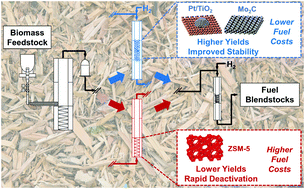2019/1/4 欧州連合(EU) CORDIS

© BsWei, Shutterstock
・ EU の資金提供による INCOVER(Innovative Eco-Technologies for Resource Recovery from Wastewater)プロジェクトでは、「バイオプロダクト回収産業とリサイクル水の供給に向けた」廃水処理技術の推進を目指し、循環型経済に資する多様な革新的技術を開発。
・ 廃水処理技術の運転コスト半減、付加価値のある副生物回収や GHGs排出量最大80%の削減に向けた新技術について、研究室での試験を終え、現在、ドイツとスペインの大規模な実証サイト 3 ヵ所にて地方自治体、農場や食品・飲料産業からの廃水処理によるエネルギーや栄養分等の資源、バイオ肥料やバイオメタン、バイオプラスチック等の生成物を回収の実証試験を実施中。
・ スペイン、ビラダカンスの実証サイトでは、3 基の横型フォトバイオリアクター(photobioreactors: PBRs)で主にシアノバクテリアの微細藻類バイオマスを生成。1 基目の PBR に農業排水を供給してシアノバクテリア濃度を上げ、2 基目と 3 基目の PBRs では生分解性バイオプラスチックであるポリヒドロキシ酪酸(PHB)を収集。3基目のPBRで回収したバイオマスを嫌気性消化槽にて二次汚泥と共に処理し、バイオガスを生成する。その後汚泥処理湿地にて汚泥を処理し、沈殿槽の水は栄養分回収カラムで処理されて太陽光駆動の超ろ過膜で殺菌後灌漑に利用。
・ スペイン南部、チクラーナ・デ・ラ・フロンテーラとエル・トーヨーにてレースウェイ型微細藻類培養槽 (high rate algal ponds: HRAPs)を実証試験。フロンテーラサイトでは、嫌気-光光合成の 2 段階 HRAP システムにより、PHB と異なる生分解性バイオプラスチックのポリヒドロキシアルカン酸(PHA)を生成。 PHA 生成後残ったバイオマスは、熱前処理と嫌気性同時消化プロセスによりバイオガスに転換する。また、バイオガス改良技術でバイオメタンを生成。
・ 3000 ㎡の HRAP 実証機が設置されたエル・トーヨーサイトでは、嫌気や清澄器による前処理の無い直接処理により灌漑用水を生成。このサイズでこのような処理をする世界初のフルスケールの HRAP となる。フィルター使用により、リンや窒素の回収を強化。太陽光駆動の殺菌システムにより安全な灌漑用水を、スマートな灌漑システムによりエネルギーと水の使用効率をそれぞれ確保する。
・ ドイツ、ライプツィヒの実証サイトでは、酵母ベースのバイオ技術プロセスにより食品部門の工業廃水から有機酸を生成。有機酸抽出後の残渣でバイオガスを生成し、発電や加熱に利用。最後に余剰な嫌気性汚泥を過熱蒸気式炭化処理し、廃バイオマスをすぐに使用できる肥料に転換する。
・ 同プロジェクトの成果は意思決定支援ツールに統合され、公共水道事業者がそれぞれのニーズに最適な投資を選択できるよう支援。今後、同プロジェクトでは全プロセスの最適化を予定している。
URL: https://cordis.europa.eu/news/rcn/130536/en
(関連情報)
INCOVER プロジェクトウェブサイト Innovative Eco-Technologies for Resource Recovery from Wastewater
URL: https://incover-project.eu/
<NEDO海外技術情報より>
Wastewater treatment progresses towards a circular economy
Wastewater treatment is no longer just about making water reusable. Researchers show how energy, nutrients and added value by-products can be extracted from wastewater.
Water scarcity is both a natural and man-made problem. While our planet doesn’t lack in fresh water, it’s distributed unevenly and a lot is wasted, polluted and unsustainably managed. Wastewater treatment combats this problem by converting wastewater into an effluent that can be reused or discharged back into the environment.
According to a pan-European consortium working on the EU-funded INCOVER project, this sanitation technology can progress even further. INCOVER is testing new solutions that will halve operating costs, produce energy, recover added value by-products and reduce greenhouse gas emissions by up to 80 %.
As stated on the project website, INCOVER aspires to propel wastewater treatment “towards a bio-product recovery industry and a recycled water supplier.” To this end, project partners have developed a wide range of technologies that contribute to a circular economy. Having already been tested individually at laboratory scale, these innovative technologies are now being tested together in three large-scale plants treating wastewater from municipalities, farms, and food and beverage industries. Located in Germany and Spain, the demonstration sites show how resources such as energy and nutrients and products such as biofertiliser, biomethane and bioplastics can be extracted from wastewater.
Horizontal photobioreactors
The plant located in Viladecans, Spain, has three horizontal photobioreactors (PBRs) that produce microalgae biomass dominated by cyanobacteria. Agricultural run-off is fed to the PBRs to increase cyanobacteria concentrations in the first PBR and to accumulate polyhydroxybutyrate, a biodegradable bioplastic, in the other two PBRs. The biomass harvested from the third PBR is treated with secondary sewage sludge in an anaerobic digester to produce biogas. The sludge is then treated in a sludge treatment wetland while water from the settler is treated in nutrient recovery columns and disinfected using solar-driven ultrafiltration. The resulting effluent is used for irrigation purposes.
High rate algal ponds High rate algal ponds (HRAPs) are being tested at two locations in southern Spain. In Chiclana de la Frontera, the production of polyhydroxyalkanoate (PHA), another biodegradable bioplastic, is achieved through a two-stage anaerobic-photosynthetic HRAP system. Following PHA production, the remaining biomass is converted into biogas using thermal pretreatment and an anaerobic co-digestion process. Biomethane is produced using integral biogas upgrading technology.
The second location is the El Toyo wastewater treatment plant in Almería, where a demo 3000 m2 HRAP has been installed to obtain irrigation-quality water. Wastewater is treated directly without anaerobic or primary clarifiers, making this the world’s first full-scale HRAP of this size to operate in this way. Planted filters are used to enhance phosphorous and nitrogen recovery. Solar-driven disinfection systems ensure the safety of irrigation water, and a smart irrigation system ensures energy and water efficiency.
Biomass waste treatment In Leipzig, Germany, a yeast-based biotechnological process is used to produce organic acid from industrial wastewater obtained from the food sector. Once the acid has been extracted, residues are used to produce biogas, which is used for power generation or heating. Finally, excess anaerobic sludge is treated using hydrothermal carbonisation to transform waste biomass into ready-to-use soil fertilisers.
The performance of the INCOVER (Innovative Eco-Technologies for Resource Recovery from Wastewater) technologies is being integrated into a decision-support system tool. The tool aims to help water authorities choose the investments that will best meet their needs. Next, INCOVER will be focusing on optimising all these processes.



